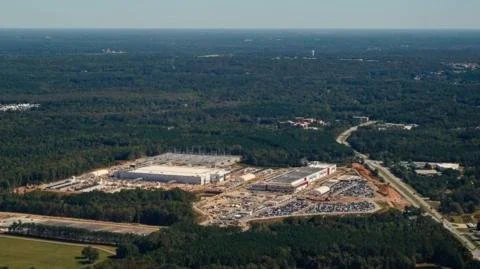Drowning in Data: The Unseen Consequences of America's New Digital Age
Beverly Morris’s idyllic retirement in Fayette County, Georgia turned into a nightmare when a data center constructed just 400 yards from her home disrupted her water supply. The large facility, owned by Meta, sits in stark contrast to the peaceful rural setting she envisioned. Morris claims sediment from the data center affected her private well, making the water unsafe to drink. Despite her struggles, Meta insists there is no connection between the two incidents, stating their operations do not harm the groundwater.
This scenario highlights a growing national issue as data centers proliferate across the U.S., where over 10,000 facilities now exist. With the rise of AI technology, the demand for data centers is escalating, bringing up local activism against new projects. Residents are voicing concerns not only about construction impacts but also about the massive water consumption required to cool the servers. Data centers can use millions of gallons of water daily, particularly during hot weather, leading to unsustainable water use—an estimate predicts 1.7 trillion gallons could be consumed by AI-driven centers globally by 2027.
Georgia, known for its humid climate, has become an attractive location for this industry, resulting in conflicts over water resources. Local activists and environmental groups highlight issues, such as sediment runoff and pollution from construction practices, drawing attention to the potential environmental consequences.
Tech companies, like Amazon Web Services, acknowledge these challenges and commit to sustainability, aiming to restore more water to the communities than they consume by 2030. However, these commitments come too late for residents like Morris who face immediate daily challenges.
Prof. Rajiv Garg of Emory University points out that data centers are now essential for daily life and urges for investment in sustainable infrastructure. The dilemma persists: as AI blossoms, the question remains about how to balance technological advancement with the preservation of vital water resources. For local residents, the future is a stark reality shaped by modern tech—loud, demanding, and at times, unlivable.

